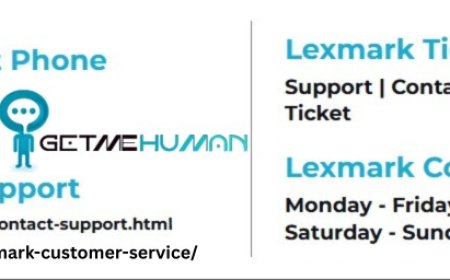Demystifying Medical Billing Services: A Practical Guide for Healthcare Providers
Learn how medical billing services streamline revenue cycles, reduce claim errors, and boost cash flow. A practical guide for healthcare providers.

Introduction
Managing a healthcare practice is challenging enough without having to decode the complexities of medical billing. Yet, billing and revenue cycle management play a central role in the health of any practices finances.
Medical billing services have become an essential solution for physicians, clinics, and specialty practices that want to simplify operations, improve cash flow, and reduce administrative burdens. In this guide, well explore what medical billing services do, why more providers are outsourcing, and how to choose the right billing partner for your needs.
What Are Medical Billing Services?
At their simplest, medical billing services transform patient visits into payments. But the process is anything but simple. Each claim passes through a maze of coding requirements, payer rules, and compliance checks before reimbursement ever arrives.
Heres an overview of the core functions billing services provide:
Insurance Verification
Before the appointment, billing teams verify that the patients insurance is active and that the plan covers the planned services. This step prevents wasted time and denied claims later.
Medical Coding
Coding specialists convert diagnoses, procedures, and services into standardized codes like ICD-10 and CPT. These codes determine how much payers reimburse your practice.https://www.cms.gov/medicare/coding-billing/icd-10-codes
Claims Submission
Billing professionals prepare clean claims and submit them electronically to insurance companies, following each payers requirements to avoid delays and rejections.
Payment Posting
Once payments arrive, billing teams post them into your system, reconciling amounts paid with expected reimbursement and identifying any discrepancies.
Denial Management
If a claim is denied or rejected, billing services investigate the cause, correct the errors, and resubmit. Timely denial management ensures you collect revenue youre owed.
Patient Statements and Collections
After insurance payments, remaining balances are billed to patients clearly and promptly, with multiple options for payment.
Financial Reporting
Detailed reporting keeps practices informed about the state of their revenue cycle. Key performance metrics include claim acceptance rates, average days in A/R, and collection percentages.
Why Practices Choose to Outsource Medical Billing
Many practices start by handling billing in-house, often relying on front desk staff to juggle claims, patient scheduling, and collections. Over time, the workload and complexity can become unsustainable.
Here are some of the most common reasons healthcare providers decide to outsource:
1. Reduce Administrative Workload
Insurance calls, coding updates, and appeals consume valuable staff time. Outsourcing allows your team to focus more energy on patient care rather than paperwork.
2. Speed Up Payments
Experienced billing companies understand how to submit accurate claims and resolve issues quickly. Faster reimbursements mean better cash flow and fewer payment delays.
3. Improve Accuracy and Compliance
Errors in coding or claim submission are costly. Professional billing services use certified coders and up-to-date software to reduce mistakes and maintain compliance with HIPAA regulations.
4. Control Costs
Hiring and training billing staff, investing in billing software, and keeping up with regulatory changes are expensive. Outsourcing converts these overhead expenses into predictable service fees.
5. Gain Access to Expertise
Billing services stay current with payer policies, coding updates, and best practices. This expertise is hard for many practices to maintain internally without dedicated resources.
How the Medical Billing Process Works
To appreciate the complexity of billing, heres what the workflow typically looks like from start to finish:
- Patient Registration: Collect demographics, insurance details, and consent forms.
- Eligibility Check: Confirm coverage and any pre-authorization requirements.
- Coding: Translate diagnoses and services into accurate codes.
- Claim Submission: Send electronic claims to payers.
- Payment Posting: Record payments from insurers and patients.
- Denial Management: Investigate and appeal rejected claims.
- Patient Billing: Generate statements and manage collections.
- Reporting: Provide visibility into revenue performance and cash flow.
What to Look for in a Medical Billing Partner
Not all billing services are the same. Here are some criteria to consider:
Specialty Experience
Look for a partner that understands your specialty, whether youre in primary care, cardiology, behavioral health, or another field. Specialty knowledge reduces errors and speeds up reimbursement.
Technology and Data Security
Choose a billing service that uses modern, HIPAA-compliant software and secure data practices to protect patient information.
Clear Pricing Structure
Understand exactly how the billing company chargesflat fee, percentage of collections, or per-claim pricingand whether there are additional costs for services like reporting or patient billing.
Performance Metrics
Ask what benchmarks the billing partner uses for success. High first-pass acceptance rates, fast claim turnaround, and low denial rates are all good indicators of performance.
Dedicated Support
Ideally, you should have access to a dedicated account manager who can answer questions, provide reports, and ensure smooth communication.
Benefits of Professional Medical Billing Services
Outsourcing isnt just about reducing workloadit can have a profound impact on your revenue and patient experience:
- Improved Cash Flow: Clean claims and faster reimbursements keep your revenue moving.
- Reduced Errors: Professional coders reduce costly mistakes.
- More Time for Patients: With administrative work off your plate, your team can focus on care.
- Scalability: As your practice grows, your billing partner can grow with you.
Common Myths About Outsourcing Billing
Some practices hesitate to outsource because of common misconceptions:
- Ill lose control over billing.
Reputable billing companies provide full transparency, including dashboards and regular reports. - Its too expensive.
Many practices find outsourcing actually saves money compared to staffing and software costs. - My staff will be replaced.
Outsourcing often supplements your team rather than replacing them, freeing them for higher-value tasks.
Emerging Trends in Medical Billing
Billing is changing fast. Here are a few trends shaping the industry:
- Artificial Intelligence (AI): Automation helps catch coding errors and streamline claims processing.
- Value-Based Care: Practices must adapt to new payment models tied to patient outcomes rather than volume.
- Greater Transparency: Patients expect clear, easy-to-understand statements and estimates.
Final Thoughts
Medical billing is more than an administrative choreits the backbone of your practices financial health. Whether youre a solo practitioner or part of a larger group, partnering with a professional billing service can reduce stress, improve cash flow, and help you deliver better care.
Understanding how billing services work empowers you to make the best choice for your practice, ensuring you get paid fully and on time.




























































